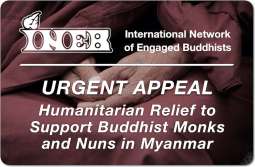anuttara-yoga-tantra (Sanskrit; Tib., bla-na-med-pa'i rgyud). A modern Sanskritized form (see Sanskrit), unattested in original Indian texts, of the term commonly used to indicate the highest or ‘supreme’ form of the four classes of tantras and their associated practices according to the New School (gsar-ma) of tantric Buddhism in Tibet. Historically, the tantras deemed to be anuttara-yoga in orientation are considered to be the latest to have been developed and compiled in India, possibly between the early 8th and the 11th century ce, although traditionally they were considered to have been promulgated during the lifetime of Śākyamuni and then concealed until they later re-emerged in the human world. Three categories of anuttara-yoga-tantras are distinguished by Tibetan exegetes: Father Tantras, Mother Tantras, and Non-dual Tantras. Father Tantras, as typified by the Guhyasamāja Tantra, emphasize the so-called generation phase (utpatti-krama) of meditative transformation; the Mother Tantras, typified by the Hevajra Tantra, the completion phase (saṃpanna-krama); the Non-dual Tantras, typified by the Kālacakra Tantra, which combines both the generation and the completion phases. Practices associated with many tantras of this class involve sexual yoga, fierce rites of destruction, and other antinomian forms of behaviour and hence are treated with great secrecy, to be taught only to those who have received the appropriate initiations (abhiṣeka).













